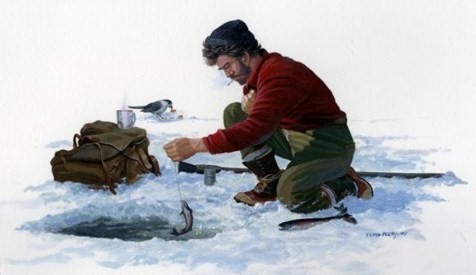Water and Other
Specific Heats
The heat capacity
of water is large. In a second we will present a value for the heat
capacity of water. First I must make a defintion. It is clear that it will be
easier for me to raise the temperature of a thimble full of water
1 degree than it would
be for me to raise the temperature of the Pacific Ocean by 1 degree and
the heat capacities would then, technically be different in each case.
Unfortunately, this means that the Heat Capacity depends not only the fact
the material in question is water, but we also need to worry about how
much water there is. This state of affairs is not good when we want to define
a property of water.
We can easily rectify this situation by asking a simpler question,
What is the amount of heat transfer needed to raise the temperature of 1,000
cubic centimeters of water (1 kilogram of water)?
We can use this idea to define the
Specific Heat Capacity
the heat needed to raise the temperature of 1 kilogram of water by
1 degree Celsius from a temperature of 20 Celsius, 4,184 Joules.
This number is actually huge. Lead heats and cools very quickly
Demonstration: In class, we placed 170 grams of Aluminum (density =
2.7 grams per cubic centimeter), steel (density = 7.8 grams per cubic
centimeer), and brass (density = 8.8 grams per cubic centimeter) into
boiling water (100 degrees Celsius) and heated them.
- When placed in ice,
each melted a certain amount of ice. The amount melted ran from
Al to steel to brass in terms of the amount of ice melted.
- This indicates that Al contained more energy than steel which
contained more energy than brass when equal amounts of each were heated to
100 degrees Celsius.
- This is because Al, Steel (iron and carbon) and Brass
(copper and zinc) have specific heat capacities of
910 J per kilogram per change in temperature,
490 J per kikogram per change in temperature,
380 J per kilogram per change in temperature, respectively.
- Note that the specific heat capacites are ranked as low density to high
density.
|
Material | Specific Heat Capacity |
Air | 1,010 Joules/kg/C |
Aluminum | 896 Joules/kg/C |
Copper | 390 Joules/kg/C |
Human Body | 3,500 Joules/kg/C |
Lead | 130 Joules/kg/C |
Wood | 1,800 Joules/kg/C |
|









